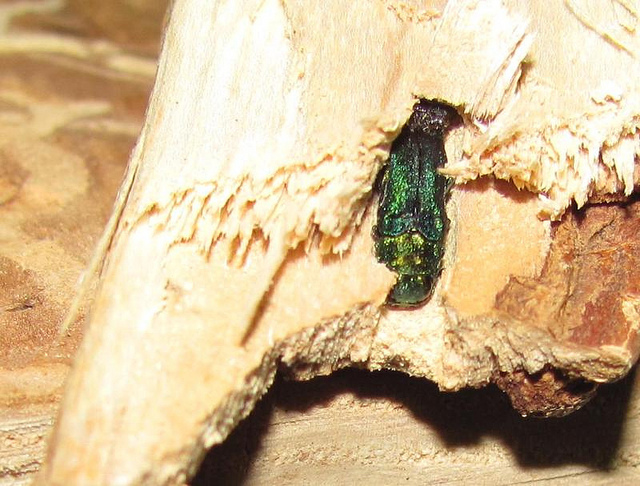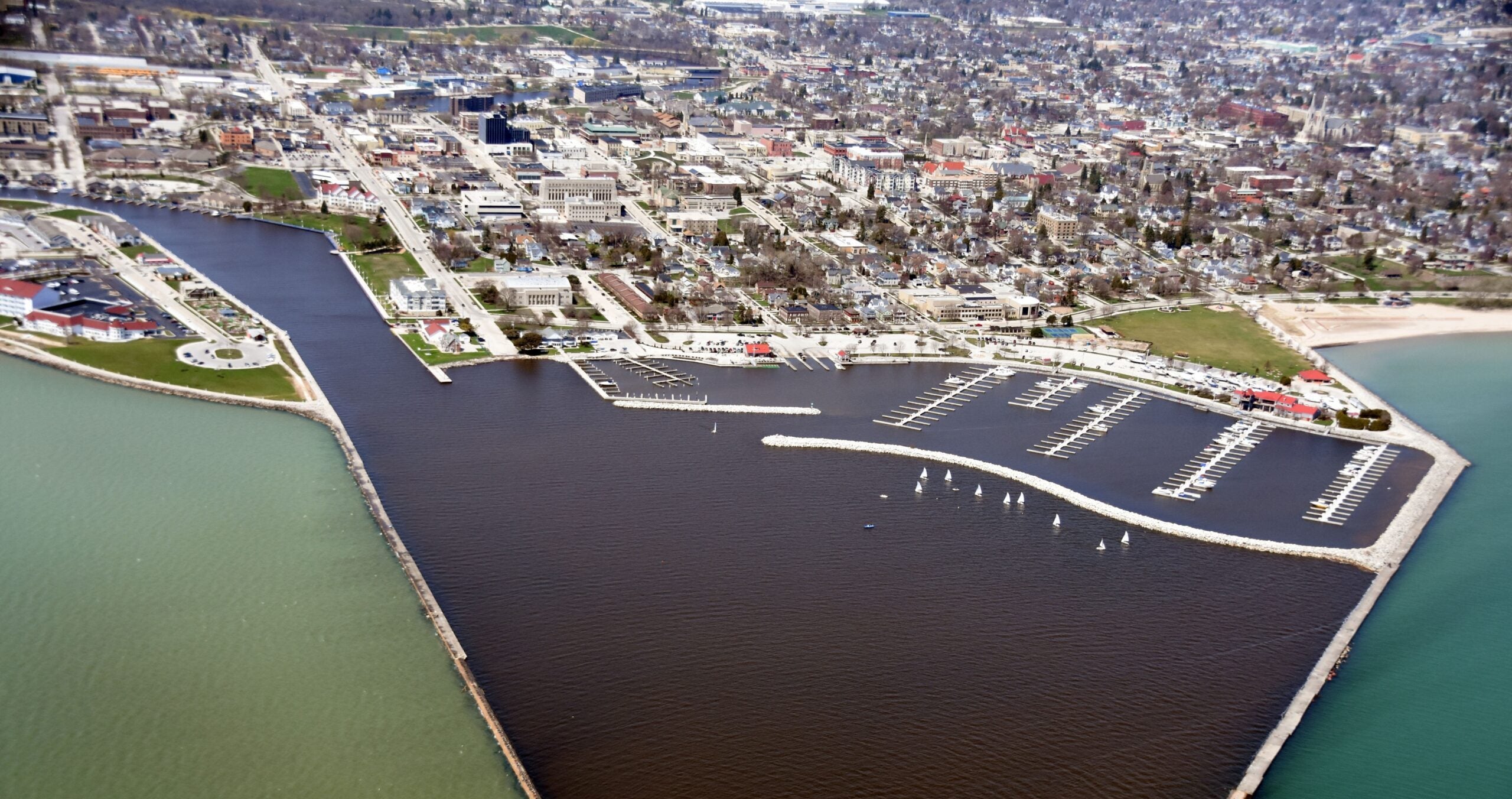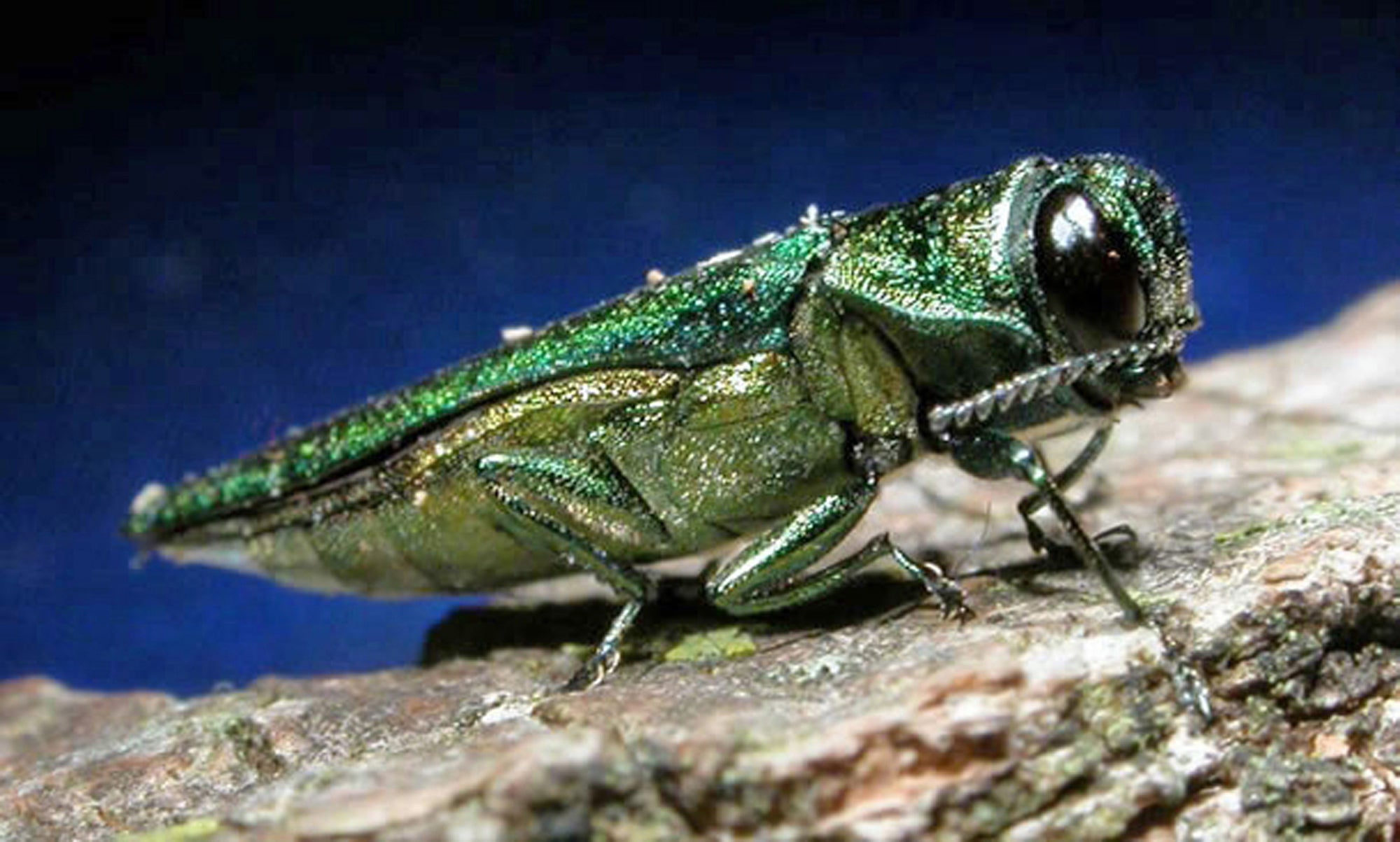Winter is a time when we can more easily spot the infested ash trees.
The emerald ash borer, an invasive insect, is the most damaging threat to Wisconsin trees. The bug kills more than 99 percent of the untreated ash trees it infests.
Bill McNee is a forest health specialist at the Department of Natural Resources. He explained how to look for infected trees with “All Things Considered” host Brady Carlson.
Stay informed on the latest news
Sign up for WPR’s email newsletter.
This interview has been edited for clarity and brevity.
Brady Carlson: For those of us who like trees and want to help spot these infections, what should we be looking for?
Bill McNee: The earliest sign of emerald ash borer infestation in an ash tree is often woodpecker damage that seems unusual or hasn’t appeared in the past. Winter is a good time to take a look at the tree because the leaves are off, and woodpeckers are very active looking for food. They’re flicking off the outer bark of the infested trees and tapping on the trees. You’ll find a drill hole that’s about the diameter of a pencil. Somehow they know to go exactly where the larvae is.
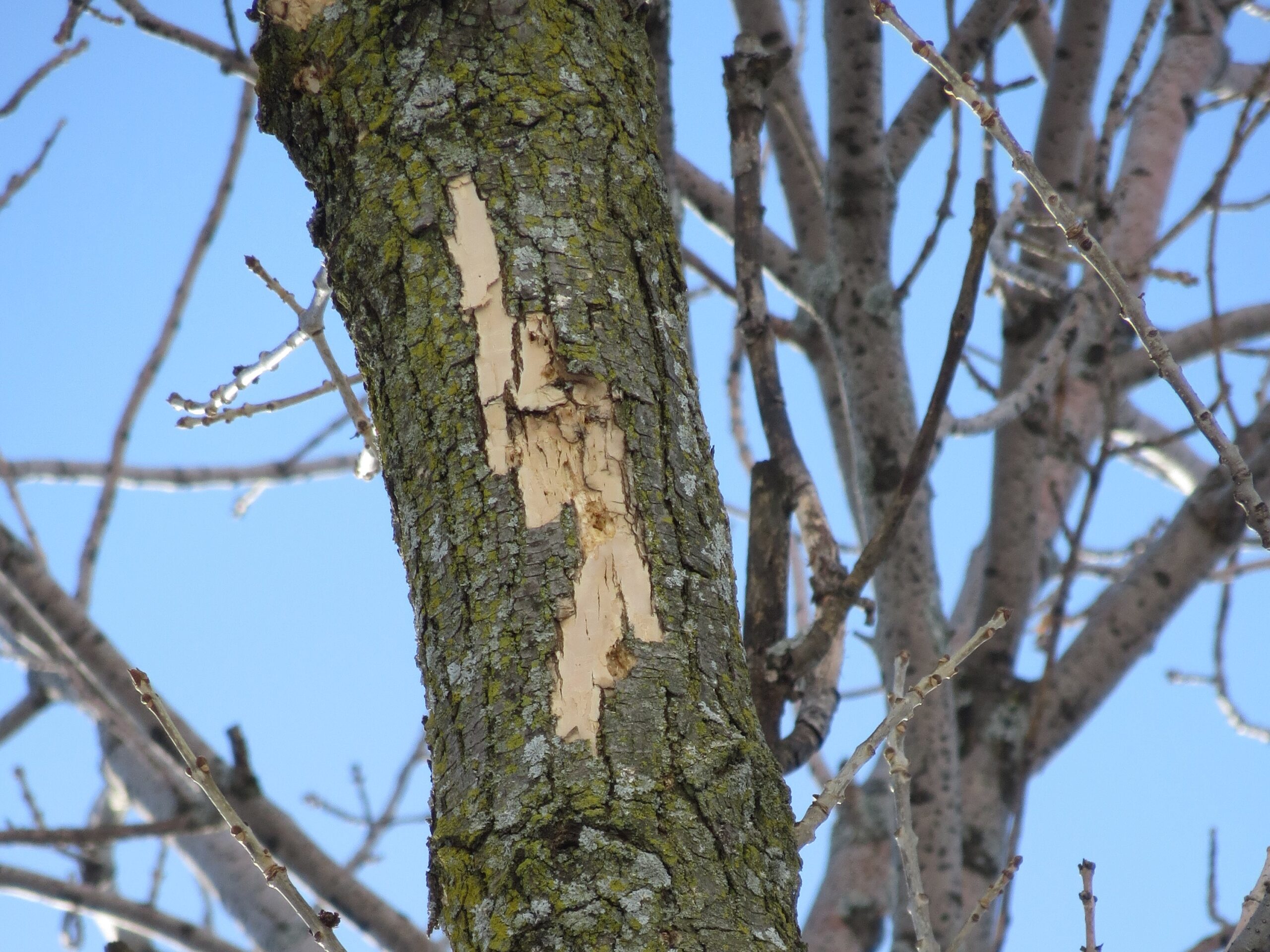
BC: Once we know that there’s an infestation, what’s done to either treat a specific tree or to keep that infestation from spreading?
BM: By the time you see a lot of woodpecker damage on the tree, that tree has generally been infested for two to three years. At that point, you are not going to get rid of the insect from that area.
If you have a tree that is of high value, such as an ash tree growing on the front lawn or in a city park, you have an opportunity to treat that tree with insecticide every year to keep it alive and looking healthy. But you have to do that relatively early in the infestation stage before there’s too much damage occurring underneath the bark of the tree.
Once you start those insecticide treatments, you can’t stop it. The beetles will find out that tree is no longer protected and they will reinfect it and kill it within a couple of years.
It will be a long-term commitment that can add up financially. So when homeowners are deciding, ‘Should I treat my ash tree or should I replace it?’ Consider the financial expense of the treatments but also the benefits that that ash tree brings to you.
BC: Are there preventative treatments that can be done before an infestation? Can you spray before an emerald ash borer makes its way to a particular area to keep it from showing up?
BM: You can treat individual trees to protect them from emerald ash borer infestation. You can do that every year or two by applying some insecticide products that you would buy at a big box store or a hardware store or by hiring a professional arborist to come in.
BC: Looking at the maps the DNR has said the emerald ash borer is, as of yet, uncommon in parts of northern Wisconsin, while it’s shown up everywhere else. Is it that it just hasn’t gotten to those regions yet or is there some other factor?
BM: The first known infestation of emerald ash borer occurred in the Saukville area back in the mid-2000s. Since then, it has spread on its own probably a few miles a year. But the main way it gets moved around is people accidentally move the insect inside infested firewood, nursery stock or unprocessed logs.
It is making its way into the north and becoming more common. The best thing that individuals can do to slow the spread of emerald ash borer in the north is to not bring firewood up north. Buy it in a the local area where you plan to use it.
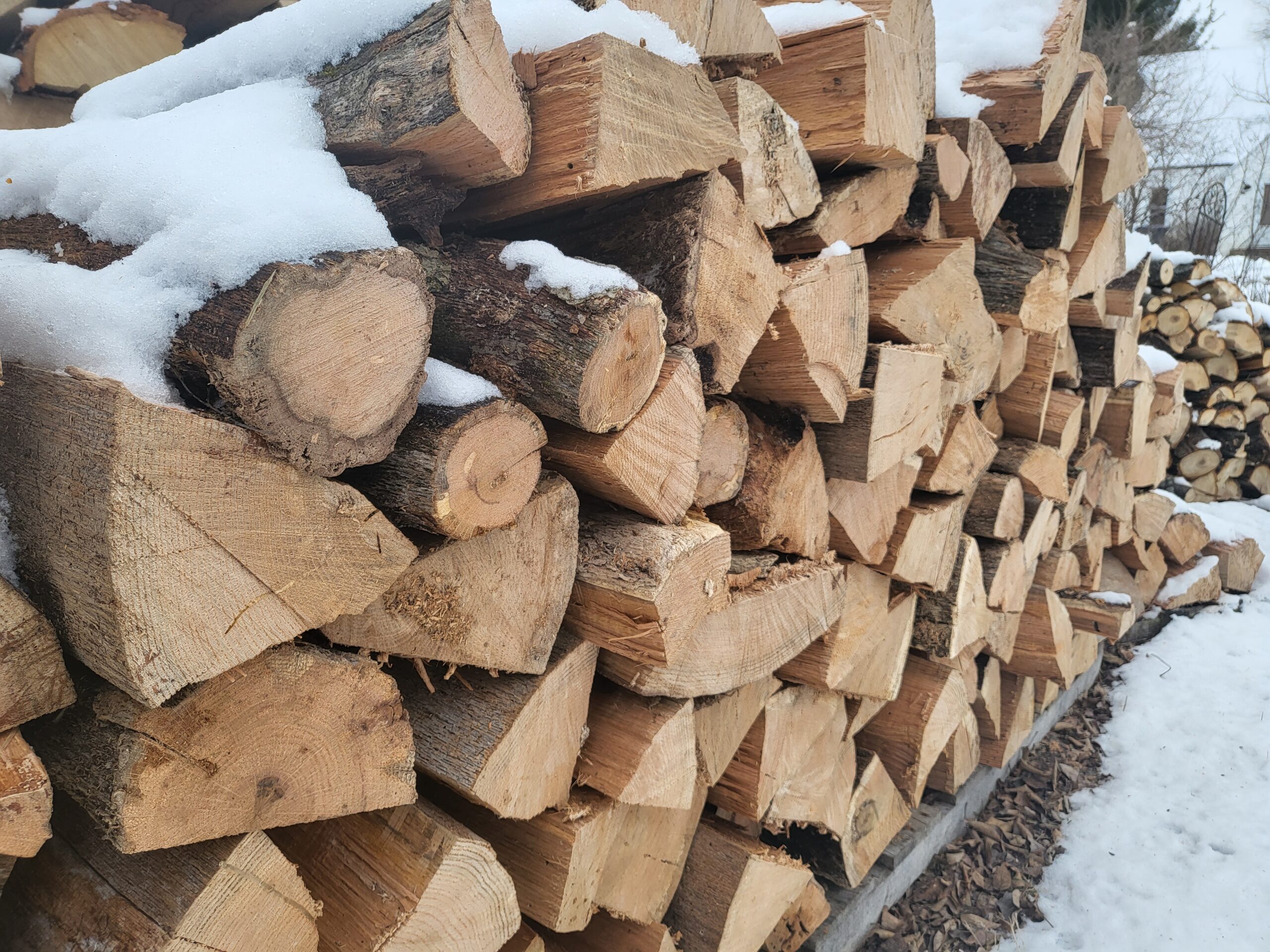
Despite all the tree mortality and tree removals that we’ve seen in the southern counties and parts of the east, a majority of the state’s ash trees are actually in the north where the emerald ash borer is still absent or a relatively spotty problem. We have really yet to hit peak emerald ash borer in the state, despite all of the ash trees that have already died in the last 15 years.
BC: That reminds of a line on the DNR website that really struck me when I read it. It said models developed from field observations predict that a healthy forest will lose 98 percent of its ash trees in six years. As the emerald ash borer spreads, does that inevitably mean that we’re facing a future where Wisconsin just has fewer and fewer ash trees?
BM: Some forests have a relatively low percentage of ash and the impact of this insect is going to be quite manageable. We do have large areas of forest in the state where ash is 50, 80, 90, 95 percent of the trees growing in that site. When those ash trees die, we’re going to have all sorts of harmful or negative economic and ecological impacts.
If you have an ash tree on your property, consider treating it with insecticide or expect it to die. It’s unfortunate but that’s really the choice that homeowners have. We have a very good information source online, emeraldashborer.wi.gov, or access information through the DNR website.
Wisconsin Public Radio, © Copyright 2025, Board of Regents of the University of Wisconsin System and Wisconsin Educational Communications Board.
